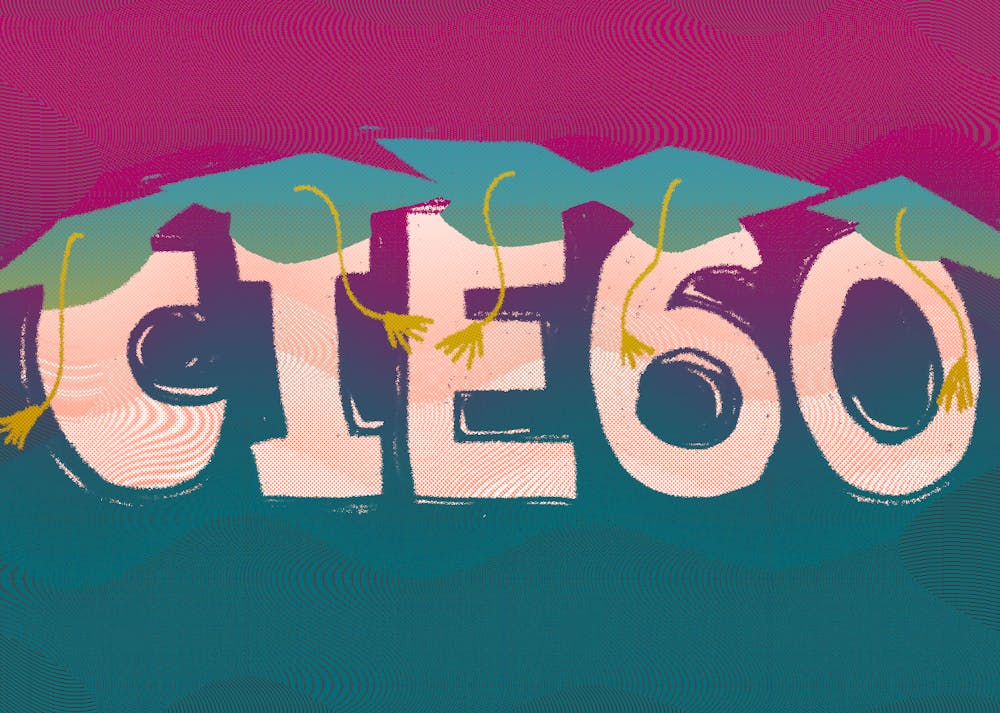In celebration of its 60th anniversary, ASU's Center for Indian Education is hosting a five-part webinar series called "Modern Legacies: Celebrating Indigenous Excellence."
Each part of the series will cover a different topic in Indigenous education and will have different scholars from the field speaking in each. The events are meant to commemorate the progress the CIE has made over its 60 years at ASU and further inspire students and faculty to continue advocating for the furthering of Indigenous education.
“The center exists to provide research opportunities for those seeking professions in Indigenous education as well as research avenues for Indigenous nations,” said Taylor Notah, senior editor of “Turning Points Magazine,” a publication for ASU's Indigenous students based out of the CIE.
Notah said the CIE is focused on helping students learn despite the University’s virtual learning approach due to COVID-19.
“We do hire students, and once they are set up with the center, they are set up with a research project as well,” Notah said. “They assist and take point on already existing projects.”
The first part of the series, "Historical Reflections of Indian Education," was held Nov. 20, with a panel moderated by Teresa McCarty, the 2009-12 co-director of the CIE. John Tippeconnic and Octaviana Trujillo, both former directors of the CIE, and ASU professor K. Tsianina Lomawaima were featured panelists for the webinar.
During the event, Tippeconnic highlighted issues in Indigenous education, such as teachers' lack of preparedness to interact with Indigenous students.
“I think a great challenge we continue to have is the preparation of teachers that come from an Indigenous American Indian perspective and have the knowledge about how to work with Indian students, how to take a curriculum and teach it so it reflects relevancy on what those students are about,” Tippeconnic said.
He also spoke of the issues the pandemic has brought to Indigenous students, such as if students can still learn and have meaningful interactions with teachers remotely.
“I think an immediate challenge is just the pandemic, how teaching is going on with students during this time is a crisis, are students really learning or is this a wasted year for many students?” Tippeconnic said.
Trujillo spoke about the digital divide among Indigenous students the pandemic has presented. According to the American Library Association, seven in 10 residents of rural tribal lands do not have access to high-capacity broadband internet.
“I think about the parents and the students and what the community impact is going to be for Indigenous families who are struggling with connectivity, with these online teaching mechanisms that we are trying to provide; I think about the challenges of resources for these families,” Trujillo said.
Trujillo also said students in general have not been properly educated on Indigenous communities that are major parts of the state.
“I can tell you I teach students that know very little about their neighbors," Trujillo said. "These are Arizona residents who know very little about the Navajo, very little about the Hopi and much less about smaller tribal nations."
Notah is a member of the Navajo nation herself and said her second-grade son has yet to learn very much at all about Indigenous culture.
“We’re slowly fading from the history books,” Notah said. “Our goal at the CIE is to reclaim our place and make sure our history is being spoken about.”
Lomawaima said a silver lining with virtual education is it could bring new ways to think about home schooling for Indigenous students.
“Perhaps it is opening opportunities towards people recognizing and figuring out new ways to handle homeschooling," Lomawaima said. "That has been the lifeblood of Native education for millennia, maybe the pandemic will virtually and in other ways open up some of those possibilities."
With the problems facing Indigenous communities, Lomawaima found optimism from the increased representation of Indigenous people in the 2020 election. According to a data analysis by the Associated Press, 60,000 ballots were cast from precincts on the Navajo and Hopi nations this year compared to around 42,000 in 2016.
“The Native vote made a difference, to me that’s a sea change," Lomawaima said. "That gives me hope and reason for optimism."
The next part of the series will be held on Jan. 22, 2021, and will cover “Building a Legacy of Excellence in Indian Education." The next three parts after January's webinar will be held once each month until April.
“While our first webinar was on the 20th, we’re taking a break for the holidays,” Notah said. “We will have one per month once the spring semester begins, and we invite everyone to join in.”
Reach the reporters at tprober6@asu.edu and skenoun@asu.edu and follow @tprobermedia and @thesabrinakeno on Twitter.




